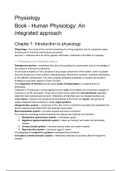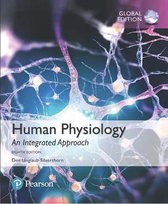Summary
Summary Physiology - Biology year 1
- Course
- Institution
- Book
This summary can be used for the first year course of Biology at the Rijksuniversiteit Groningen: Physiology. For this summary the book Human Physiology: An integrated approach is used.
[Show more]




